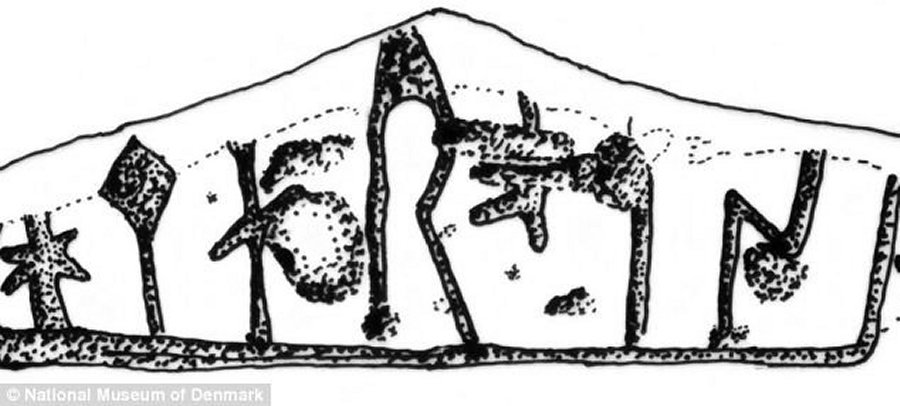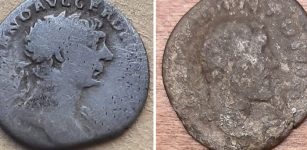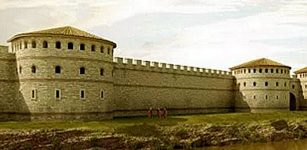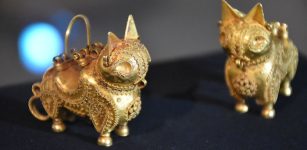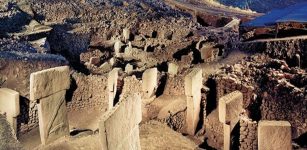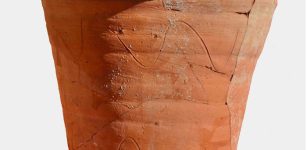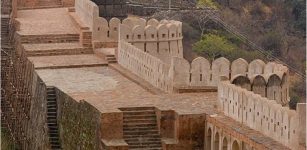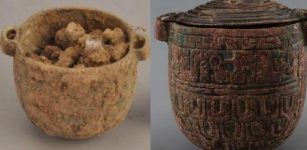Remarkable Discovery Of Unusual “Hammer Of Thor” Finally Solves An Ancient Mystery
AncientPages.com - Archaeologists have unearthed an unusual "hammer of Thor" covered with runes.
What is so special about this particular find is that it can finally solve the mystery of whether these amulets, were a representation of Thor's hammer or something else entirely.
In Norse mythology, Thor is one of the greatest gods, most popular and powerful gods.
In modern times, we associate him with the fifth day of the week, Thursday (Thor's day), which is named for him.
Known as the god of thunder and son of Odin and Jord, Thor was a guardian of the Viking Gods, without him they would all perish. In Norse mythology, Thor's hammer helped prevent giants from destroying Asgard, the celestial home of the gods.
See also:
Ragnarok In Norse Mythology – The Doom Of The Gods And Apocalyptic Record Of The Coming Comet
Unravelling The Mystery Of The Ulfberht Sword – An Ancient Viking Artifact Far Ahead Of Its Time
Mysterious Viking Code Jötunvillur Deciphered By Norwegian Researcher
Thor was in possession of a famous weapon, his hammer, named Mjölnir, and a belt of strength, named Megingjardir. He had a goat-driven chariot that created the noise of the thunder.
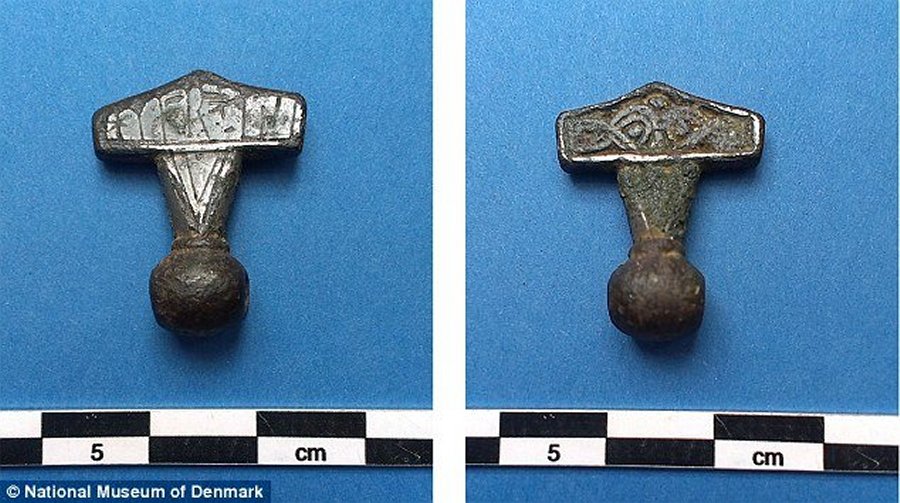
Both sides of the amulet are shown here with runes seen on the left image. The latest find is unusual as it has runes inscribed that reads 'Hmar x is' (This is a Hammer')
Despite that thousands of Viking amulets similar to Thor's hammer have been found, no-one really knew what these objects represented, not until now.
Archaeologists, working with the National Museum of Denmark, have unearthed the unusual 10th century amulet in Købelev on the Danish island of Lolland that could finally end the debate on how Thor's legend influenced Viking jewellery.
The latest find is unusual as it has runes inscribed that read 'Hmar x is' meaning 'This is a Hammer'.
An unknown rune writer confirmed that the amulet depicts Thor's hammer (illustration of hammer and runic text, pictured) - a lasting symbol of Viking culture. The fact that the person who made the hammer was literate is a source of fascination for archaeologists.
'It was the amulet's protective power that counted, and often we see torshammere and Christian crosses appearing together, providing double protection', said Peter Pentz, an archaeologist at the National Museum of Denmark.
This object is cast in bronze and has traces of silver or tin and gold plating. The runes were written by an unknown writer who has confirmed that these amulets do depict Thor's hammer - a lasting symbol of Viking culture. The runes range in height from 3 to 7mm, so it required precision to inscribe them onto the amulet.
According to Daily Mail, "the fact that the person who made the hammer was literate is a source of fascination for archaeologists. They claim the amulet could indicate that literacy was widespread among craftspeople."
Unusual Hammer of Thor found in Denmark.
At the site, archaeologists also recovered fragments of silver needles and a mould for making brooches.
These suggest that there may have been a workshop producing jewellery nearby. Museum Lolland-Falster, who reported the discovery, has no plans to excavate the Viking site at Købelev, but said it will continue metal detector surveys.
The latest discovery of the Hammer of Thor seems to have ended the debate as to the representation of the object once and for all. Mjölnir - Thor's hammer was - a hammer and an ancient mystery has finally been solved!
Copyright © AncientPages.com. All rights reserved. This material may not be published, broadcast, rewritten or redistributed in whole or part without the express written permission of AncientPages.com.


